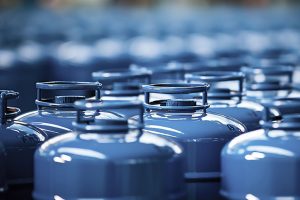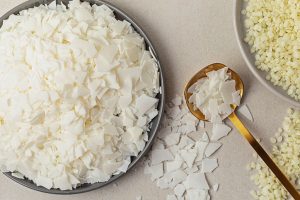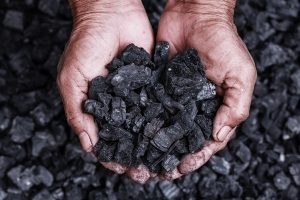What Is Crude Oil: Characteristics, Uses and How It’s Produced
What is crude oil? Crude oil, commonly known as “black gold,” is a thick, flammable, black-colored fossil fuel extracted from deep within the earth. It is composed of hydrocarbons, sulfur, nitrogen, and heavy metals. As a natural and non-renewable resource, crude oil serves as the basis for many useful products, including gasoline, diesel, plastics, medicines, chemical fertilisers, and cosmetics. Therefore, in the following article from the Iran ETrade blog, a specialised source for bitumen prices, we will provide a comprehensive explanation for this concept.
What is crude oil?
Crude oil is a mixture of hydrocarbon deposits and other organic materials, primarily used as the raw material for producing fuels (such as gasoline, diesel, and jet fuel) and petrochemical products.
What is crude oil? Crude oil is a thick, black liquid with a strong odor that gushes out by drilling wells into the deeper layers of the earth’s crust.
This fossil fuel is a complex mixture of hundreds of organic compounds made primarily of carbon and hydrogen atoms. Also, it typically contains varying amounts of sulfur, nitrogen, oxygen, heavy metals, and salts.

How is crude oil formed?
To understand what crude oil is and how it is formed, and to answer the question of whether oil is organic or inorganic, we need to briefly look at the process of crude oil formation.
The formation of crude oil is the result of long-term biological, physical, and chemical processes that take place deep underground. There, high pressure and temperature act on the remains of dead organisms (diatoms) such as algae and zooplankton.
To explain what crude oil is, it’s worth noting that the popular idea linking fossil fuels to dinosaurs is not entirely accurate. In fact, after death, these microscopic organisms settled in low-oxygen environments on the sea floor. Then, over millions of years, heat and pressure transformed this organic matter into oil and gas.
1. The Theory of Crude Oil’s Organic Origin</h3>
To answer the question of how crude oil is formed, the most widely accepted scientific explanation is the Biogenic Theory (organic origin theory).
This theory suggests that crude oil originates from the organic remains of microscopic marine organisms. These materials were buried in anoxic (oxygen-deprived) environments, where they underwent bacterial fermentation followed by thermal transformation deep within the Earth.
2. The Abiogenic Origin Theory of Crude Oil
Another explanation for the origin of crude oil is the Abiogenic Theory, which attributes oil formation to deep-earth chemical processes without the involvement of biological organic matter.
According to this theory, hydrocarbons are formed through reactions between carbonates or metal oxides and water and hydrogen under extremely high pressure and temperature deep within the Earth.
Crude Oil Compounds
What is crude oil? It is a complex substance made up of hydrocarbons, which are mainly classified into four major groups: paraffins, naphthenes, olefins, and aromatic compounds.
To describe what crude oil is, we focus on its compounds. These compounds are important to understand what color crude oil is. Crude oil is usually dark brown to black, but depending on its composition, it can also appear green, amber, or even yellowish.
It is a complex mixture of hydrocarbons, generally classified into four main categories:
Normal Paraffins and Isoparaffins
Among the important compounds in crude oil are normal paraffins, which have a simple, straight chain of carbon atoms. Isoparaffins are the branched and more complex counterparts of these straight-chain hydrocarbons.
Naphthenes
Saturated cyclic hydrocarbons in crude oil are naphthenes. They play an important role in the production of gasoline and fuel, and in certain refining processes, they help improve product quality.
Olefins
Alkenes, or olefins, are compounds not naturally present in crude oil but are formed during refining processes, such as cracking. They also have many uses in the plastics and chemical industries.
Types of Crude Oil: Classification of Crude Oil
What is crude oil, and what are its types? The appearance, composition, and quality of crude oil can vary from one oil field to another. For better understanding and valuation, crude oil is classified in various ways, including by geographic location, API gravity, and sulfur content.

1. Classification Based on Geographic Location
The simplest way to categorise crude oils is usually by their place of origin and the source of the crude oil. The most important global benchmark crude oils are:
- Brent Crude Extracted from the North Sea, Brent is one of the key benchmarks for global oil pricing.
- West Texas Intermediate (WTI): A high-quality, light crude oil from the United States, especially Texas. Its price is usually slightly lower than Brent.
- Heavy Crude Oil: Mainly produced in the Middle East, this type of oil is heavier and is often used as a pricing benchmark for Asian markets.
2. Classification Based on API Gravity
API gravity, short for American Petroleum Institute gravity, indicates how light or heavy a crude oil is. This numerical index is based on the oil’s density relative to water:
- Light Crude Oil: Has an API gravity above 31.5. It is highly desirable because it can be easily refined into gasoline and other light fuels.
- Medium Crude Oil: Has an API gravity between 22.3 and 31.5.
- Heavy Crude Oil: Has an API gravity below 22.3. These oils are more viscous and more difficult and expensive to refine.
3. Classification Based on Sulfur Content
Sulfur is a natural impurity found in crude oil. Based on its sulfur content, crude oils are divided into two main categories:
- Sweet Crude Oil: Contains less than 0.5% sulfur by weight. This type of crude is cleaner, causes less pollution, and is easier to refine.
- Sour Crude Oil: Contains more than 0.5% sulfur. Refining it requires specialised equipment and more complex processes.
What Are the Physical and Chemical Properties of Crude Oil?
When discussing what crude oil is, it’s also important to examine its physical and chemical properties. Crude oil is a complex mixture of thousands of chemical compounds, which determine how it behaves during refining, transportation, and final use.
Even simple questions like “What is crude oil’s color?” can offer clues to better understand the complex composition of this substance.
1. Crude Oil Density
Density is defined as the ratio of mass to volume. In the case of crude oil, its density determines whether it is classified as “light” or “heavy.” The API gravity scale is commonly used to measure this density.
2. Sulfur Content
Sulfur is one of the key impurities in crude oil. Its concentration plays an important role in both the refining process and the environmental impact of the oil:
- Crude oil with low sulfur content (sweet crude) is easier to refine and produces less pollution.
- Crude oil with high sulfur content (sour crude) requires more advanced refining equipment and generates more pollutant gases.

3. What Is Crude Oil’s Pour Point?
The pour point is the temperature at which crude oil begins to solidify or thicken and can no longer flow easily. This property is crucial for the transportation of oil, especially in cold regions.
4. Solubility of Crude Oil
Crude oil does not dissolve in water. However, because it is lighter than water, it floats on the surface. Furthermore, some of its compounds are soluble in certain organic solvents, such as benzene or toluene.
5. Boiling Point of Crude Oil
Crude oil does not have a fixed boiling point because it is a mixture of hundreds of substances. Therefore, instead of a single boiling point, crude oil evaporates over a range of temperatures. This range forms the basis of the refining process.
In refineries, refiners heat crude oil and its components, which makes crude oil vaporise at different temperatures (such as gasoline, kerosene, diesel). This characteristic is fundamental to the fractional distillation process of crude oil in the distillation towers.
What are the uses of crude oil?
For understanding crude oil and its applications, it’s important to know that crude oil has uses in agriculture, production of detergents and paints, rubber manufacturing, plastics, pharmaceuticals and cosmetics, the food industry, transportation, energy, medical industries, clothing, defence, lubricants, and household uses.
However, most people immediately think of it as just fuel for vehicles. In reality, this black liquid is the raw material for thousands of products we encounter in daily life. Therefore, its uses are:
1. Use in Agriculture
A large portion of chemical fertilisers, pesticides, and insecticides use crude oil derivatives in their composition.
2. Use in Manufacturing Detergents, Paints, and Other Materials
Detergents used for washing clothes and dishes, as well as paints, adhesives, resins, and solvents, are all derived from crude oil.
3. Production of Rubber, Plastics, and Similar Materials
Most industrial rubber and plastics found in household items, packaging, and even toys are made of petroleum-based materials.
4. Pharmaceuticals and Cosmetics Manufacturing
In pharmaceuticals, they use petroleum derivatives to produce painkillers, capsules, creams, and ointments.
5. Food Industry
Crude oil is not used directly in food, but its derivatives are in lubricants for food processing machinery, plastic packaging, artificial flavorings, and preservatives.
6. Transportation Industry
Gasoline, diesel, kerosene, and jet fuel are all products of refining crude oil.

7. Use of Crude Oil in Energy Industry
A portion of crude oil is directly used to generate electricity and heat in power plants. Its derivatives are also useful for the manufacture of batteries and generators.
8. Crude Oil for Producing Lubricants
Motor oil, grease, hydraulic oil, and brake fluids are all made from petroleum products.
9. Use of Crude Oil for Household Purposes
In some regions, oil is still used for home heating, cooking, or lighting. Additionally, many household products—such as candles, lighters, and wax—contain petroleum-based materials.
10. Medical Industry and the Use of Crude Oil
Materials derived from crude oil are useful in manufacturing surgical gloves, syringes, plastic medical equipment, disinfectants, and imaging devices.
11. Use of Crude Oil in the Clothing Industry
Synthetic fibres such as polyester, nylon, and spandex—used in clothing, shoes, and bags—are produced from petrochemical and petroleum-based materials.
12. Uses of Crude Oil in the Defence and Military Industry
Military fuels, specialised lubricants for heavy engines, bullet-resistant coatings, durable rubber, and even parts of missiles are made from crude oil derivatives.
Extraction and Processing of Crude Oil
What is crude oil, and how is it processed? This black fossil fuel is stored deep underground beneath layers of rock. The following are the main stages involved in crude oil processing:
- Exploration: Locating oil reserves using geological tools and seismic surveys.
- Drilling: Drilling oil wells to access underground crude oil.
- Production: Pumping the oil to the surface using mechanical equipment or natural pressure.
- Initial Separation: Removing gas, water, and impurities from crude oil at the wellhead.
- Transportation to Refineries: Transferring the crude oil to refineries via pipelines, trucks, or ships.
- Refining: Converting crude oil in to usable products through industrial processes
What Are the Stages of Crude Oil Refining?
To understand what crude oil is and how it becomes usable, it’s important to know that crude oil is typically fluid and thin, but not directly usable in its raw form. Refining is the process through which crude oil is transformed into useful components such as gasoline, diesel, and chemical products.
Stages of Crude Oil Refining:
- Heating the Crude Oil: The refiners first heat crude oil to prepare it for separation.
- Distillation in a Distillation Tower. The refiners separately heat oil into different components based on their boiling points.
- Cracking (Molecular Breaking); Heavy molecules are broken down to produce lighter fuels like gasoline.
- Reforming Processes: The molecular structure is modified to improve fuel quality, especially gasoline.
- Treating (Purification): Sulfur, metals, andother impurities are removed.
- Blending: Various components are combined to create final products that meet specific standards.

What are crude oil products?
Crude oil products refer to the materials obtained from refining crude oil. These products have uses in various industries such as transportation, agriculture, petrochemicals, cosmetics, food, and medicine.
Products Derived from Crude Oil
Some of the most important products derived from crude oil include the following:
- Gasoline
- Kerosene (aviation fuel)
- Diesel
- Fuel oil
- Liquefied Petroleum Gas (LPG)
- Bitumen
- Motor oil
- Petrochemical feedstocks (used to make plastics, synthetic fibres, chemical fertilisers, and pharmaceuticals)
Comparison Between Crude Oil and Petroleum
In fact, crude oil is the raw material, while petroleum refers to the collection of finished products such as gasoline and similar fuels.
Crude oil is a natural, unprocessed liquid extracted directly from the earth, and it cannot be used without refining. In contrast, “petroleum” is a broader term that includes both crude oil and all the products obtained from its refining.
How to Identify Oil Reserves
To locate oil reserves, geologists use advanced methods such as geophysical surveys, satellite imaging, geological mapping, and 3D seismic surveys.
In seismic surveying, scientists generate sound waves and analyse their reflections from underground layers to identify oil-bearing structures. Finally, they conduct exploratory drilling to confirm the presence of oil.
As mentioned earlier, crude oil originates from the remains of marine plants and animals that have decomposed under high pressure and temperature over millions of years. Depending on the type and source of extraction, crude oil can vary in consistency from thin and fluid to thick and tar-like.
Which country has the largest oil reserves?
Is oil organic or mineral? According to many geologists, the origin of crude oil is organic matter deposited on the floors of seas and oceans.
The largest confirmed crude oil reserves in the world are located in Venezuela. Following Venezuela, Saudi Arabia, Iran, Canada, and Iraq hold the next largest reserves. However, the economically recoverable amount of these reserves depends on technology and political factors as well.
How much crude oil remains in the world?
According to estimates by international organisations, approximately 1.6 trillion barrels of recoverable crude oil remain worldwide. At the current consumption rate, these reserves may last for about 50 more years—unless new sources are discovered or global consumption decreases.

What happens if oil runs out?
If non-renewable oil resources are depleted, industries such as transportation, petrochemicals, electricity generation, modern agriculture, and even pharmaceuticals will face a serious crisis.
Many plastic products, detergents, fertilisers, and medicines would also no longer be produced. Of course, the world is moving toward renewable energy sources like solar, wind, and biofuels, but completely replacing oil requires time and significant investment.
What are the short-term and long-term health risks of exposure to crude oil?
Short-term skin contact with crude oil can cause irritation, itching, skin inflammation, and burning of the eyes and throat. Inhaling crude oil vapors may lead to headaches, dizziness, nausea, and confusion.
In the long term, continuous exposure to crude oil compounds—especially aromatics like benzene—can result in respiratory disorders, liver and kidney damage, neurological problems, and an increased risk of cancer.
Health Risks of Crude Oil for Workers
Workers in the oil industry face hazards such as inhaling toxic vapors, burns from contact with hot oil, explosions, fires, falls from platforms, and mental health issues caused by long shifts.
To reduce these risks, it is essential to use safety equipment, ensure proper ventilation, provide regular training, and conduct occupational health monitoring.
Frequently Asked Questions About What is Crude Oil
In this section, we address the most common questions related to the topic “What is crude oil?”
What color is crude oil?
Crude oil is usually dark brown to black, but depending on its composition, it can also be green, amber, or yellowish.
What is the difference between crude oil and other types of oil?
Crude oil is the natural, unprocessed form of oil, whereas other types of oil (such as kerosene or diesel) are products obtained through its refining and processing.
Can crude oil be used directly after extraction?
No, crude oil is not usable without refining and must be processed into products such as gasoline, diesel, and bitumen.
Is crude oil dangerous?
Yes, contact with or inhalation of crude oil can cause skin problems, respiratory issues, poisoning, and even increase the risk of cancer.
At what depth is crude oil found underground?
Answering this question helps understand what crude oil is: crude oil is typically found at depths ranging from 600 to 6,000 meters beneath the earth’s surface, below rock layers and within natural reservoirs.

sources: investopedia, chartindustries
Bitumen Price
- The Largest Bitumen Refineries In The World: Top 20 Refineries...
- What Is An Oil Lubricant: Types, Applications + Production
- What Is LPG: Properties + Uses Liquefied Petroleum Gas
- What Is Petroleum Paraffin: Types + Properties And Applications
- What is Petroleum Coke: Types + Applications
- What Is Mazut: Advantages, Applications + Hazards









